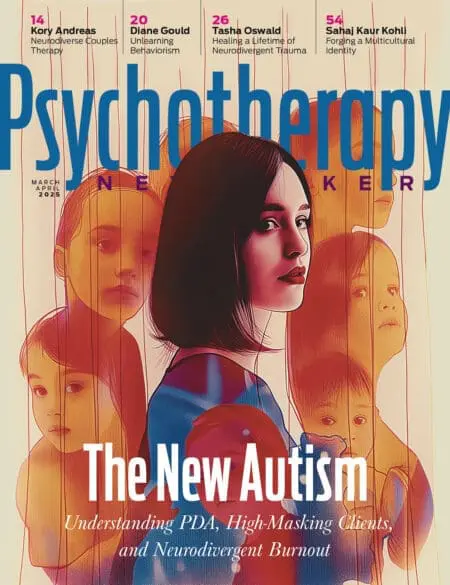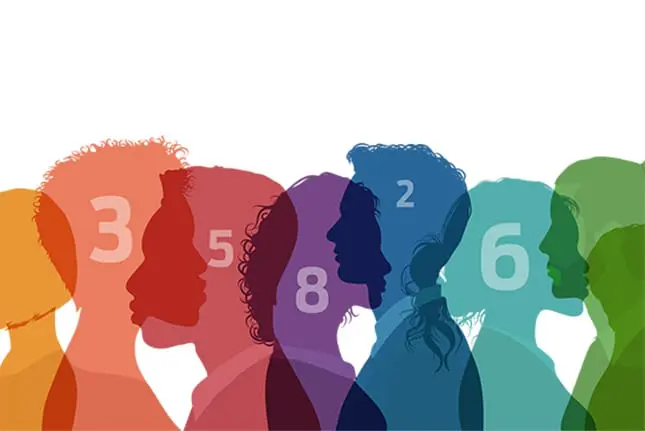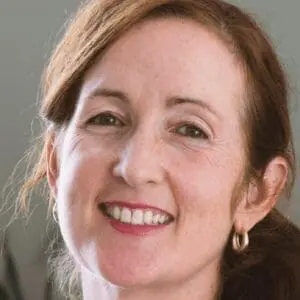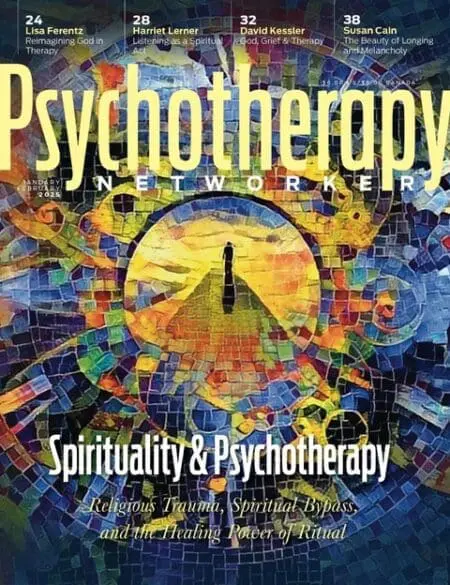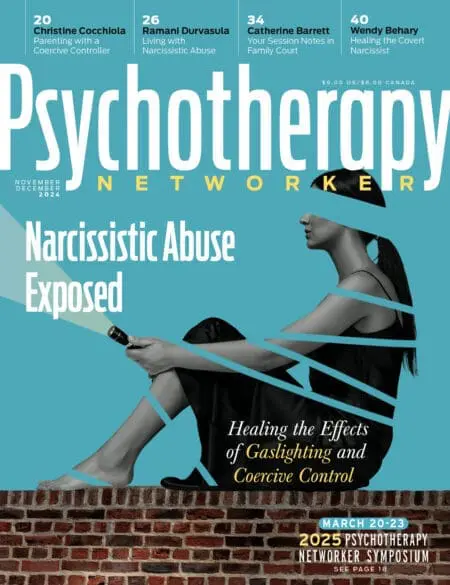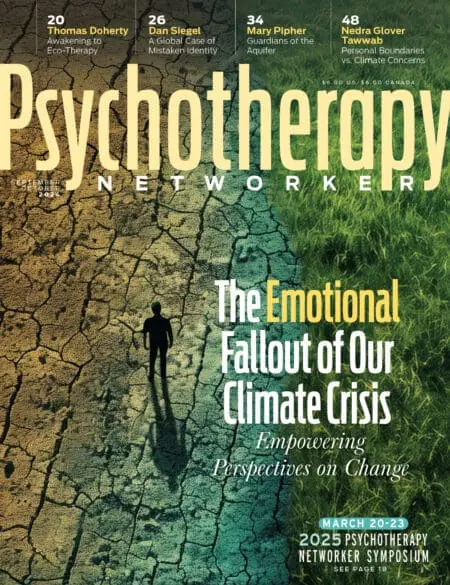Back in the ‘90s, I spent a memorable night in Berkeley, California, at a house party where my fellow social workers and therapist friends were gathered. Traffic was rough, so I’d shown up late and frazzled. Feeling slightly self-conscious, I made my way to the kitchen in search of a drink, where a woman in a caftan offered to pour me some peach-colored juice from a mixer.
“Guava from the garden?” she asked. As she handed it to me, she cocked her head and smiled. “Care to share your number with me?”
“Oh,” I shrugged, flushing. “I’m not on the market.”
“I mean your number,” she laughed, “as in, the number of your Enneagram type. What is it?”
“I’m afraid I don’t know,” I admitted.
“Oh dear,” she gaped. Taking hold of my elbow, she steered me into an adjoining room, where we stopped before a bookcase. “Take your pick,” she offered.
I read the titles aloud. “The Wisdom of the Enneagram. Personality Types. Human Types. The Enneagram Workbook.” I paused before rattling off the title of a daunting-looking hardback, Between Metaphysics and Protoanalysis: A Theory for Analyzing the Human Psyche. And when I got to the final book, My Best Self: Using the Enneagram to Free the Soul, I smiled and said ruefully, “Well there’s a promise.”
Laughing, she pointed to one of the book covers, which featured an image of a circle containing askew and overlapping triangles. “The nine points are our varying human types,” she explained, “which represent and clarify our particular intelligences, our strengths and weaknesses, and how we interact with the world. Understanding our own number, or type, helps us gain insight into how we became who we are, what we might want to change, and how we can better relate to people. For instance, I’m a seven, a bit more joyful and up for adventure than your average Jill. So, Enneagram experts might advise me to pair with a grounded, serious, hardworking one. We share a line in the Enneagram figure.”
“Cool,” I replied. But part of me wasn’t so sure it was cool. I’d moved to California in part to escape labels of all kinds. Also, this Enneagram stuff felt a little woo-woo, and as a newly minted caseworker, I couldn’t imagine it helping any of my traumatized clients get back on their feet.
After this party, I continued to meet people in the Bay Area who’d tell me their Enneagram number. But eventually, the bloom on the Enneagram rose seemed to fade around me. In fact, I hadn’t thought about the Enneagram for many decades: until recently, when I learned about its growing (or regrowing) popularity in certain therapy circles.
From the Ancients to the Net Denizens
The Enneagram—a personality framework tied to a symbol of purportedly ancient origins—has evolved over centuries through the efforts of seekers around the world interested in mysticism, religion, and later, psychology. Online and in-person Enneagram training and certificate programs for therapists, counselors, and coaches have now proliferated in and outside the country. The American Journal of Psychiatry recently recognized the Enneagram’s new popularity and published a piece saying, in part, “Despite limitations in objective studies, it appears to meet the three criteria used for personality inventories: predictive validity, demonstrated usefulness, and comprehensiveness.” Therapists cite the ability it gives them to connect easily and quickly with new clients and to offer them a template for understanding their psychological development and stuck points. And there seems to be a meaningful uptick in well-attended trainings for practitioners: one reflected at the Psychotherapy Networker Symposium in May, when a workshop on using the Enneagram with clients, a topic that hadn’t been offered at the conference for a decade, needed to be held in one of the largest ballrooms to accommodate close to 200 attendees.
When compared to other personality frameworks—think the decidedly less mystical Myers-Briggs Type Indicator, with its 16 possible personality types conceived by a mother-daughter duo devoted to Carl Jung—the Enneagram’s origin story is wide-ranging, spanning centuries. According to British trainers at Integrative Enneagram Solutions, the Enneagram diagram has its roots in ancient Greece, where a Hellenistic philosopher named Plotinus noted that human nature was informed by nine qualities. In the late 1300s, a Catalonian theologian named Ramon Llull expanded this idea into a circular diagram that represented nine truths and nine vices he deemed universal.
The more modern Enneagram started to take shape when the Armenian philosopher and Christian mystic George Gurdjieff first shared the nine-pointed star within a circle as a representation of creation and our human unfolding. His idea was picked up in the 20th century by Bolivian-born philosopher and spiritualist Oscar Ichazo, who created a model of the nine ways our egos become fixated while we’re young. He called this the Enneagram of Fixations and lectured on overcoming them through self-realization. From there, Chilean-born clinical psychiatrist Claudio Naranjo, an apprentice and successor of Gestaltist Fritz Perls and a fixture at The Esalen Institute, brought it into the types of spiritual therapy circles where I was first introduced to it in Berkeley.
International Enneagram trainer Peter O’Hanrahan notes, “Before the late 1970s, I don’t think the field was quite ready to embrace the Enneagram as a therapeutic tool. But since then, I’ve been able to teach it on six continents, and the books have been translated into 25 languages.”
Changing Our Stories
Does narrowing a person to a “type” feel gimmicky and wrongheaded? Back when I was offered that guava juice by the woman in the caftan, it did to me. But for some people wary of modern therapy, the Enneagram offers a compelling and simple self-help tool with ancient, spiritual roots. And for a growing number of therapists, it’s an accessible tool that highlights how formative stories and experiences shape not just how we grow, but also how we don’t.
“I help people use the Enneagram as a tool to go deeply into character structure, and then I remind them their persona is adaptable,” O’Hanrahan says. “It offers us a look at internal motivation through the lens of our patterns of thinking, feeling, and being in our bodies. Also, when people are struggling with their relationships, the Enneagram offers a powerful reminder of all the ways other people in our lives have their own strengths, foibles, and needs.”
This focus on how we interact with others who differ from us has positive repercussions for therapy. O’Hanrahan has observed that Christians in the U.S., many of them fundamentalists, are sharing the tool widely in premarital and marital counseling. Counselor Katie Gustafson, who’s based near Nashville and has a Christian background, believes the system can help clients “identify their dominant personality, so that they can understand the story they’ve been living out of their whole lives.”
In fact, Gustafson finds this framework so useful that while she may not always introduce it to clients, she’ll still counsel them from a place of her own understanding of where they fall on the Enneagram. “If a client is in my office in crisis, I’m not going to do an Enneagram-typing interview. But I’ll ask myself, Are they more analytical? Do they come from the head, as in one of the head types: a five, six, and seven? Are they feelers? Are they really operating out of a place of emotion, which would be the heart types: twos, threes, and fours? Are they more grounded in the body and more in tune with the energy of the body types: eights, nines, and ones?
“Knowing the Enneagram has helped me join with clients faster than other therapists might. I’ve had a lot of clients say to me, ‘I just feel like you get me.’ As a tool for therapists, it gives us insight into why people do the things that they do. Then it’s a matter of helping them change the stories that aren’t serving them. That’s where we can start to do integrating work.”
But like so many self-help tools these days, the Enneagram doesn’t require deep, integrative work. After all, it’s ubiquitous on the internet. Truity.com, which offers a host of personality tests and was founded by a master’s-level counseling psychologist, boasts helping “60 million people better discover their true selves.” When I last visited, the tracker on their Enneagram page had logged nearly 800,000 test-takers. There’s even a surprising number of online Enneagram gift-giving guides: you can buy a leaf blower for an efficient “3.” Or, for a responsible and trustworthy “6,” reusable silicon bags to lessen that carbon footprint. Amazon’s selling Enneagram-scented candles by type now, too.
With all this hyperavailability, why does Gustafson believe it’s still beneficial for therapists to jump in and facilitate the Enneagram themselves? “The way we learn our type matters,” she says. “Online tests don’t know where we are in our lives. They can’t tell what level of stress we’re operating from. I like to tell clients they’re a great jumping-off place, but it’s not where the work ends.”
In her Enneagram workshops, Gustafson advises people to be careful about celebrating what some call the superpowers of their type, because as all therapists will tell you, “They’re simply adaptive strategies that may have been running the show for too long.”
She says, “For example, I have a client who’s a type eight, and eights are known as the Challenger, the Protector. This client was the oldest child in her family, and her mother suffered from severe depression. She remembers being so young she couldn’t even see over the kitchen counter, but still making sandwiches for her developmentally delayed cousin because her mom couldn’t. My client was a strong figure in her family, and she was admired for it. But this drive to protect and succeed at all costs ended up not serving her well later in life. The Enneagram helped her see this and what she needed to change in an easily graspable way.”

Hearing anew about the Enneagram has made me revisit my position that it never would have worked for the social work clients on my caseload back in the ’90s. Since I had such limited time with them, maybe the Enneagram’s simplicity would’ve proved useful in helping them connect early life experiences to how they currently processed and reacted to their world. It might also have offered us a shorthand for understanding complex or hurtful interpersonal dynamics by providing a window into the inner workings of the different types around them.
O’Hanrahan tells me he understands when others critique “typing” ourselves or our clients or coworkers or family members as foolishly simplistic. But he reminds me that the field has a long history of tying early experience to eventual behavior: a form of typing without directly saying so. “Yes, some will say the Enneagram is superficial,” he admits. “But it’s good, practical psychology. The insights it offers help people communicate better. It provides clear guidance. Once you’re aware of your type, you can begin to do more of this and less of that. If you consider that superficial, well, so be it.”
Lauren Dockett
Lauren Dockett, MS, is the senior writer at Psychotherapy Networker. A longtime journalist, journalism lecturer, and book and magazine editor, she’s also a former caseworker taken with the complexity of mental health, who finds the ongoing evolution of the therapy field and its broadening reach an engrossing story. Prior to the Networker, she contributed to many outlets, including The Washington Post, NPR, and Salon. Her books include Facing 30, Sex Talk, and The Deepest Blue. Visit her website at laurendockett.com.
